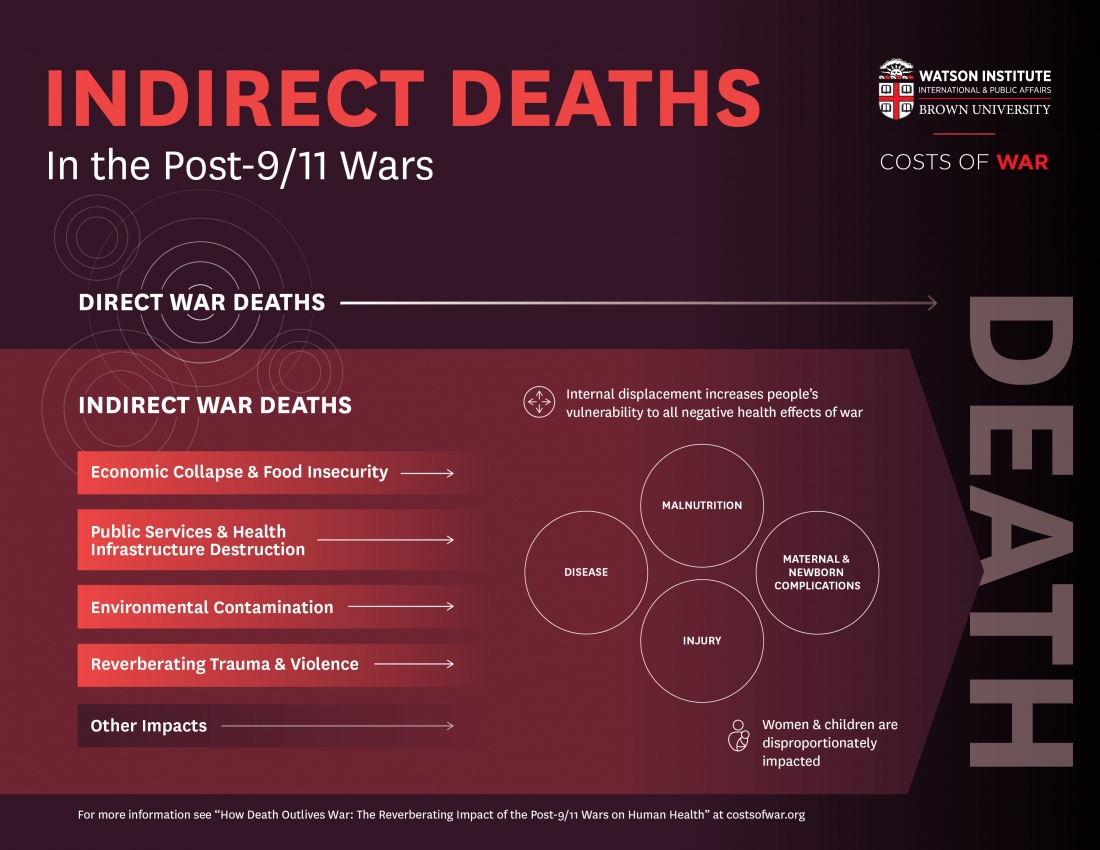How Death Outlives War: The Reverberating Impact of the Post-9/11 Wars on Human Health

War’s destruction of economies, public services, infrastructure, and the environment leads to deaths that occur long after bombs drop and grow in scale over time. This report reviews the latest research to examine the causal pathways that have led to an estimated 3.6-3.8 million indirect deaths in post-9/11 war zones, including Afghanistan, Pakistan, Iraq, Syria, and Yemen. The total death toll in these war zones could be at least 4.5-4.7 million and counting, though the precise mortality figure remains unknown. Some people were killed in the fighting, but far more, especially children, have been killed by the reverberating effects of war, such as the spread of disease.
The report examines the devastating toll of war on human health, whoever the combatant, whatever the compounding factor, in the most violent conflicts in which the U.S. government has been engaged in the name of counterterrorism since September 11, 2001. Rather than teasing apart who, what, or when is to blame, this report shows that the post-9/11 wars are implicated in many kinds of deaths, making clear that the impacts of war's ongoing violence are so vast and complex that they are unquantifiable.
In laying out how the post-9/11 wars have led to illness and indirect deaths, the report’s goal is to build greater awareness of the fuller human costs of these wars and support calls for the United States and other governments to alleviate the ongoing losses and suffering of millions in current and former warzones. The report highlights many long-term and underacknowledged consequences of war for human health, emphasizing that some groups, particularly women and children, suffer the brunt of these ongoing impacts.

